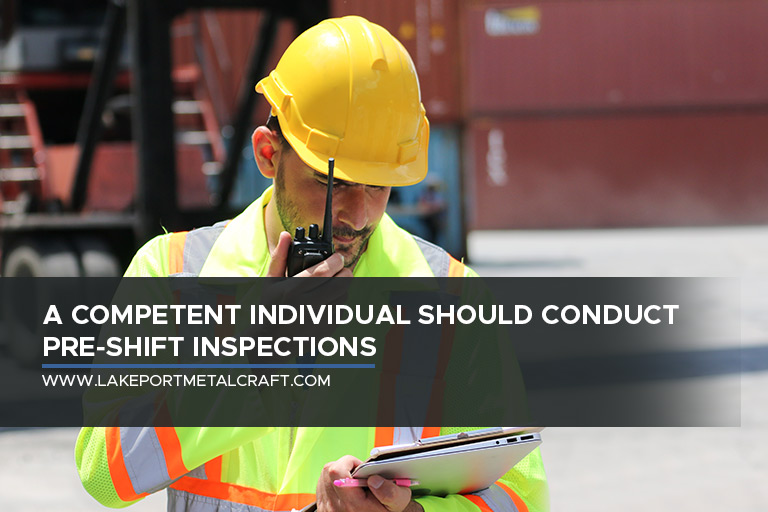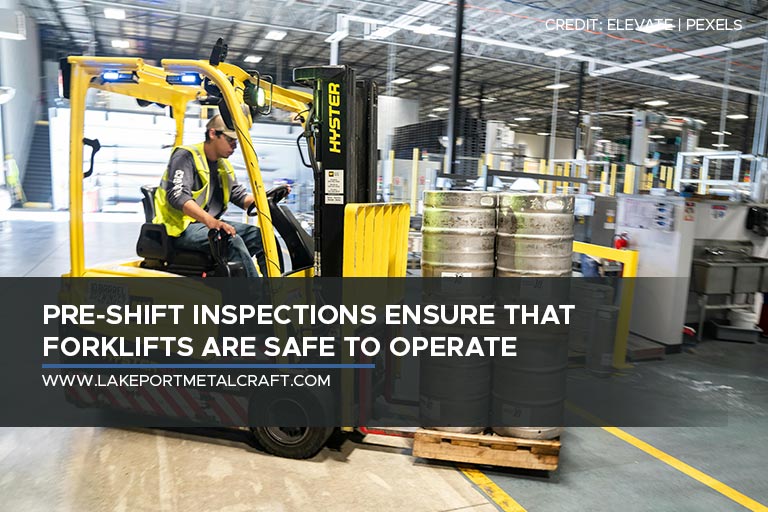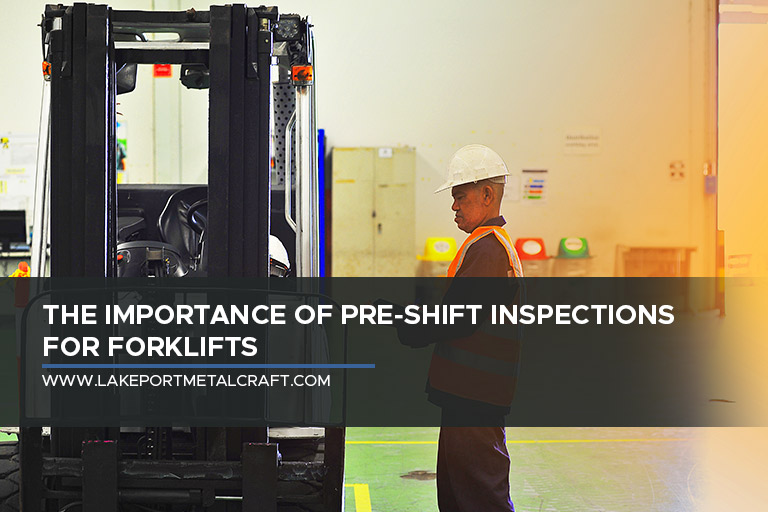Safety and maintenance should be the priority when working with commercial or industrial equipment, whether it’s excavators, compactors, or stand-up reach forklifts. The well-being of you and your team depends on these two factors.
This is why regular pre-shift inspections of your forklifts are necessary. By prioritizing pre-shift inspections, you can ensure the safety of the operators and those working alongside them. Here’s what you need to know about the impact of pre-shift inspections on workplace operations.
What Is a Pre-Shift Inspection?
Pre-shift inspections are just as important as providing stand-up reach truck training for your stand-up reach truck operators. These inspections involve assessing the condition of the equipment before operations begin, allowing operators or technicians to identify and rectify any potential issues that could compromise forklift safety.
The procedure involves a comprehensive “walk-around” examination, examining various equipment components, including the forklift backrest, overhead guard, counterweight, tires, and hydraulic lift cylinder, to name a few.
Pre-Shift Inspection Checklist
Forklift pre-shift inspections allow companies to comply with the following legal requirements and regulations in Canada:
- Occupational Health and Safety Act (OHSA)
The OHSA requires employers to ensure that the workplace is safe for their employees, which means implementing protocols for inspecting and maintaining forklifts.
- Canadian Standards Association (CSA) standards
CSA standards provide guidelines for designing, constructing, and operating forklifts.
What does a pre-shift inspection checklist typically include?
- Visual inspection – Check the forklift for any noticeable damage, such as dents, cracks, or missing parts.
- Mechanical inspection – Inspect the brakes, steering, and other critical components.
- Fuel and fluid levels – Check the fuel, oil, and other fluids in the forklift.
- Lighting and warning devices – Check the headlights, taillights, brake lights, and other warning devices.
- Safety equipment – See if the fire extinguisher, seatbelt, and other safety equipment are operational.
Depending on the forklift type and manufacturer’s recommendations, the specific components of your pre-shift inspection checklist may vary.
Who Should Perform Pre-Shift Inspections?

A “competent” individual, not just any operator, must perform pre-shift forklift inspections. Competent personnel possess the knowledge, training, and experience to organize and conduct inspections per OHSA regulations.
To qualify for conducting these inspections, maintenance technicians and truck operators should have the following knowledge and skills:
- Familiarity with personal safety practices needed for periodic and routine inspections of forklifts being used
- Understanding of industry terminology
- Ability to comprehend manufacturer’s specifications, forklift manuals, drawings, and components lists
- Knowledge of the purpose and function of all devices, components, and accessories typically found on powered lift trucks and the ability to inspect them to ensure proper functioning
- Proficiency in electrical and electronic control circuit principles
- Understanding of mechanical principles related to structures, machines, and mechanisms
- Familiarity with pneumatic principles (where applicable)
These requirements ensure that pre-shift inspections are done thoroughly, accurately, and efficiently. The result is a high level of security in the workplace and a reduction of potential accidents or hazards associated with forklifts.
Why Are Pre-Shift Inspections Important?

Through pre-shift inspections operators and/or technicians can do the following:
Ensure compliance with legal requirements and regulations
Pre-shift inspections are required by regulatory agencies, including the CCOHS and provincial occupational safety and health agencies. Failure to implement this step may result in penalties.
Identify potential issues
By conducting pre-shift inspections for forklifts, operators and maintenance personnel can be proactive. They are able to detect any underlying problems or abnormalities that could impact safety. These signs, which may include wear, damage, malfunction, or the lack of a forklift rear post, may not be obvious during use.
Early detection allows workers to address these issues on time. This helps prevent further deterioration, potential breakdowns, or safety hazards that could lead to accidents or injuries.
Identifying potential issues early on also enables effective maintenance planning. You and your workers can schedule necessary repairs or replacements, minimizing downtime and disruptions to operations.
Document service and maintenance history
Pre-shift inspections are documented to record the findings of the inspection, identified hazards, and corrective actions taken. Proper documentation is evidence of the company’s systematic approach to safety and can provide evidence of the steps taken to maintain a safe workplace.
Enhance workplace safety
Pre-shift inspections promote a culture of safety awareness not just among your forklift operators but among the rest of the employees on the floor. This ultimately contributes to a more secure work environment.
Take a proactive step towards workplace safety today by implementing regular pre-shift inspections as part of safety protocols for forklift operations. Doing so can provide your employees with a safe workplace, prevent accidents, and create a productive working environment.
Because safety is always a top priority in workplaces, Lakeport Metalcraft offers a reliable stand-up reach truck rear post, The Backbone, for added forklift safety. We manufacture our product to address the hazard of standup forklift underride. You may call 416-587-5809 to speak with us about stock availability.

